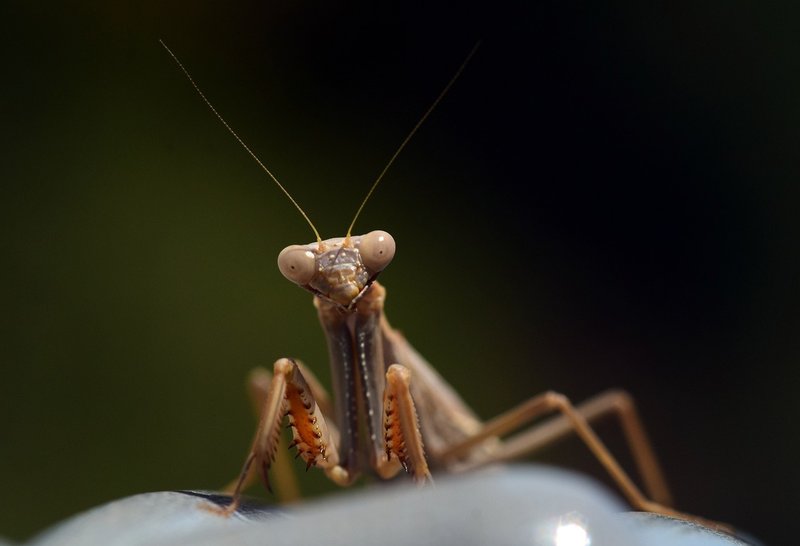
Think of the praying mantis as a tiny indicator of our planet’s health. Just like how a canary once warned coal miners of toxic gases, these remarkable insects reflect changes in their environment. With rising temperatures and shifting weather patterns, the impact of climate change on the praying mantis isn’t just a small detail; it reveals larger issues that affect us all. So, let’s dive in and unravel how climate change is affecting these incredible creatures and, by extension, our shared environment.
Understanding the Praying Mantis Ecology
Before we talk about climate change, it’s important to understand what a praying mantis does within its ecosystem. These insects are natural predators, hunting smaller insects like flies and aphids. They help maintain balance in the food web, acting as a natural pest control method in gardens and farms.
You might be wondering how they achieve this. A mantis is equipped with exceptional vision and lightning-fast reflexes, allowing it to catch prey with its spiny forelegs. They even have a unique way of hunting—often remaining still and camouflaged until their prey comes too close. This hunting strategy not only showcases their adaptability but also highlights their role as an essential part of the ecosystem.
However, like many species, mantises are vulnerable to changes in their environment. The impact of climate change on the praying mantis can disrupt their hunting methods, breeding cycles, and survival rates. Understanding their ecology gives us a clearer picture of what’s at stake.
Changing Climate Patterns
Climate change is primarily driven by human activities, particularly the burning of fossil fuels. This activity is causing the Earth’s temperature to rise, leading to unpredictable weather patterns. For praying mantises, these changes can be critical.
As temperatures increase, the habitats where mantises thrive may shift. They generally prefer warm climates, but when temperatures rise too much, it can create a hostile environment. For instance, prolonged heatwaves can lead to dehydration and increased mortality rates among younger mantises.
Additionally, altered rainfall patterns can affect the availability of their food sources. If it doesn’t rain enough, plants won’t thrive, and that means fewer insects for the mantis population. This chain reaction shows how interconnected species are, and how a change in one aspect of the environment causes ripples throughout the ecosystem.
Impact on Life Cycle and Mating
The life cycle of the praying mantis consists of several stages: egg, nymph, and adult. Each stage is delicately timed to coincide with environmental conditions. Let’s say you’re a young mantis—your survival depends on the right temperature and humidity levels to develop properly.
Climate change can throw a wrench into this finely-tuned schedule. Warmer temperatures may cause mantises to emerge from their eggs earlier than usual. While this might sound like a good thing, it can expose them to predators and harsh weather before they are fully ready.
Mating behaviors can also be affected. Female mantises are known for their cannibalistic tendencies, often consuming their mates after mating. This behavior is influenced by their nutritional needs, which can vary with changing food availability caused by climate shifts. A decline in food sources could lead to them being less selective about mates, further impacting the overall health of the population.
Effects on Distribution and Habitat
As climate change progresses, it’s likely that we’ll see shifts in the geographic distribution of mantises. Some species might move to cooler areas or higher altitudes in search of suitable habitats, while others might struggle to adapt.
For example, mantises in areas that experience prolonged drought may not survive, leading to localized extinctions. Not only does this affect the mantises themselves, but it also disrupts the food chains they belong to. As these insects vanish from certain regions, the predatory species that rely on them for food will also face challenges.
Here’s another thing to consider: invasive species may thrive more than native species under new climate conditions. If an invasive insect can outcompete the praying mantis for food or territory, it can push mantises into even smaller, more vulnerable niches.
Conservation Efforts and Future Outlook
So, what can we do about the impact of climate change on the praying mantis? Conservation efforts can play a vital role in helping maintain not just mantis populations but the overall health of ecosystems.
Creating awareness about their importance is a great starting point. Farmers and gardeners can adopt eco-friendly practices that reduce pesticide use, allowing mantises to thrive naturally. Supporting native species by planting native plants can also provide the right environment for mantises to prosper.
Furthermore, broader efforts to combat climate change, like reducing carbon footprints and promoting sustainable practices, are crucial. The future of praying mantises and countless other species hangs in the balance. By taking action, we can help ensure that they continue to play their essential role in our ecosystems.
The impact of climate change on the praying mantis is just one example of how our changing planet affects even the smallest creatures. These insects, with their intriguing adaptations and critical roles in nature, remind us of the intricate connections between species and their environments.
Addressing climate change is not just about saving distant ecosystems; it’s about preserving the balance of life all around us. By understanding and protecting praying mantises, we take a step toward safeguarding our shared future. Together, we can create a healthier planet for all living things—including those incredible little mantises that remind us of nature’s wonders.

